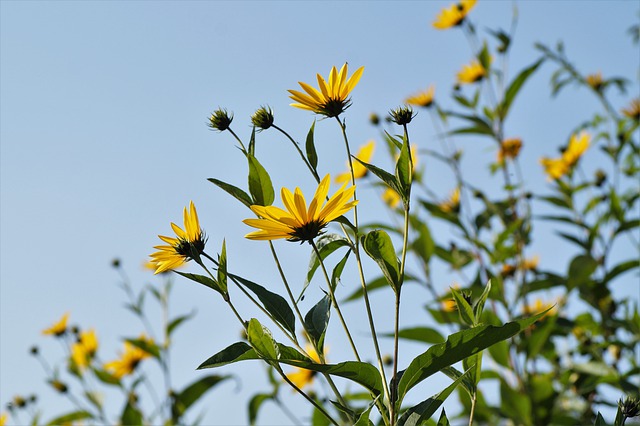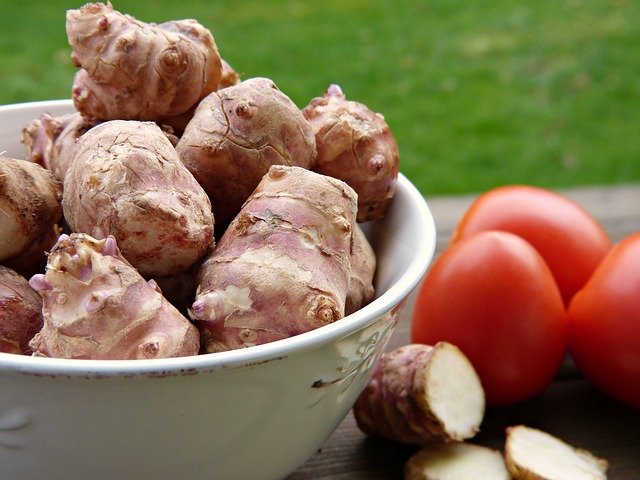Jerusalem artichoke is commonly referred to as sunchokes, Indian tuber, Brandy potato, Ross potato, or diabetic potato.
It is now a very popular tuber that’s grown for food and medicinal uses.
Sunchoke is a good of protein minerals, rich in iron, potassium, and most importantly inulin, which is responsible for the regulation of blood sugar.
This is the reason sunchokes is regarded as diabetic potato.
However, it is not only good for diabetic patients but also has other health benefits.
Not only the taste is sweet, but it also contains rich ingredients, which can help to lower the body’s cholesterol.
Jerusalem artichoke has a positive effect on the blood sugar level as well as a great helper for pain and fever.
Also, the Jerusalem artichoke is gluten-free, and it’s a great alternative for vegans to eat healthily.

Origin of Jerusalem artichoke tuber
The Jerusalem artichoke originates from Brazil and was an important vegetable especially for the indigenous people – Tupinambá.
It was formerly used as horse feed and it’s healthy for horses.
At some point in the 17th century, emigrants brought Jerusalem artichoke to Europe.
By chance, they came upon the great tuber that saved their lives.
Shortly before the starvation, the Jerusalem artichoke became their lifesaver and thus brought the vegetables to Europe.
The Jerusalem artichoke belongs to the daisy family and its botanical name is Helianthus tuberosus.
Nature of the Plant
Jerusalem artichoke is closely related to the sunflower and can reach a height of up to 3 meters.
Jerusalem artichoke is a perennial plant and mostly cultivated for its tubers.
The stolons, which are on the rootstock can also be consumed.
These reach a size of about 4 to 10 cm; it is white inside and has yellow-brown to the red-violet color outside.
When you see Jerusalem artichoke, it looks like sweet potato in terms of the color, and ginger, in terms of the branches.
The taste is sweet and it’s like a mix of artichoke, water chestnut, and parsnip.
Harvesting and Storage

In Europe, Jerusalem artichoke blooms around August to September and produces flowers that resemble a sunflower.
It is important to harvest the tuber in October before it starts regrowing again for the second year.
This is when the carbohydrate and the inulin ingredients are of good quality.
After harvesting your sunchokes, you need to keep the tubers in a cool, dry place, away from direct sunlight.
Varieties of Jerusalem artichoke
Now that Jerusalem artichoke is grown in almost every part of the world, there are different varieties that differ not only in taste but also in color, size, shape, and even maturity.
The varieties include Bianka, Gute Gelbe, Topstar, Topianka, and they are popular as eating tubers.
The forest spindle and the red zone ball, on the other hand, are commonly used in distilleries.
Conclusion
Jerusalem artichoke is a healthy plant. The tuber, when matured can be eaten as yam.
The flowers are also edible but the choke should not be eaten.
It is not actually poisonous but can cause ill effects.
Jerusalem artichoke should not be eaten every day since much inulin can result in bloating, pain, diarrhea, and other symptoms.







